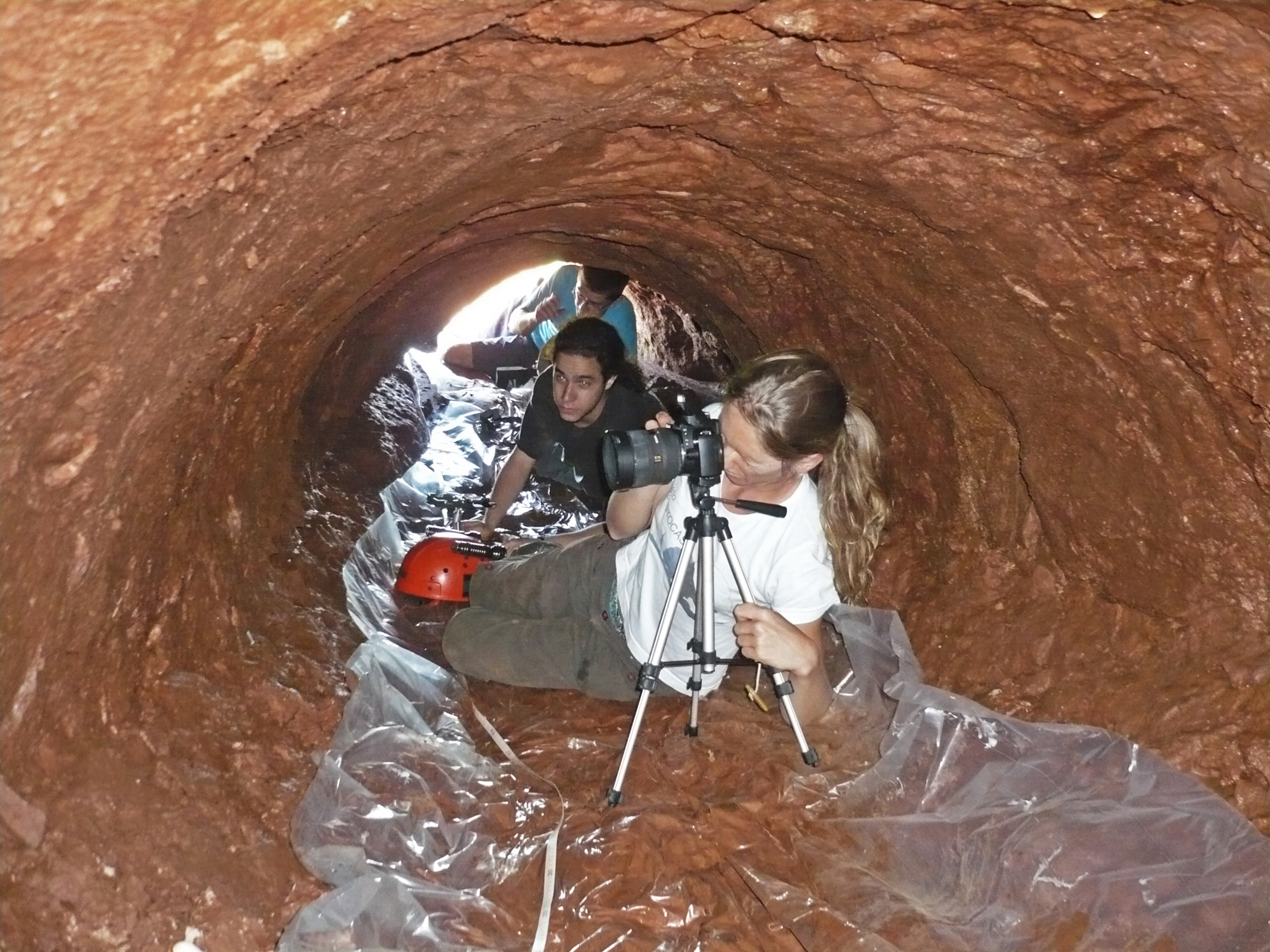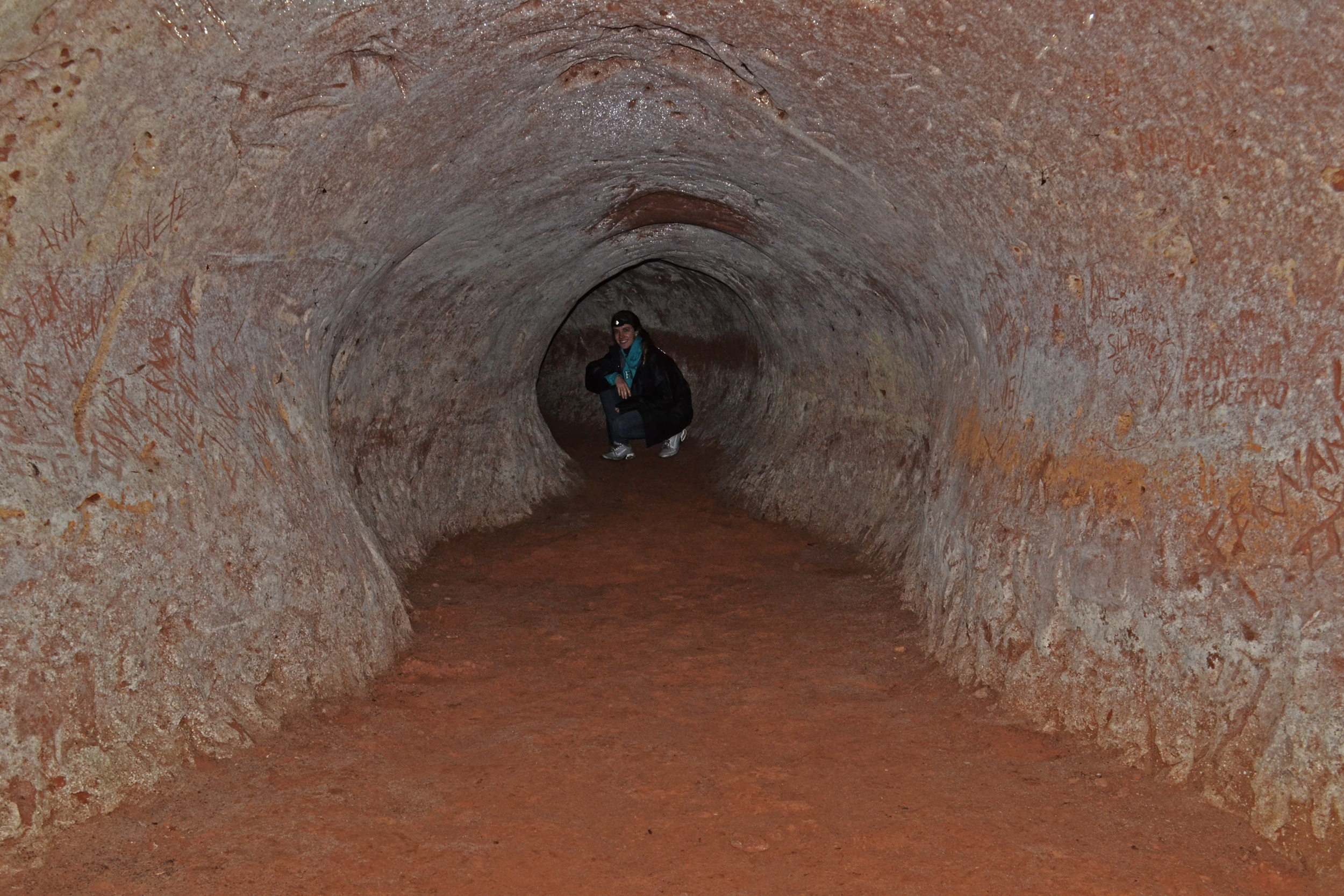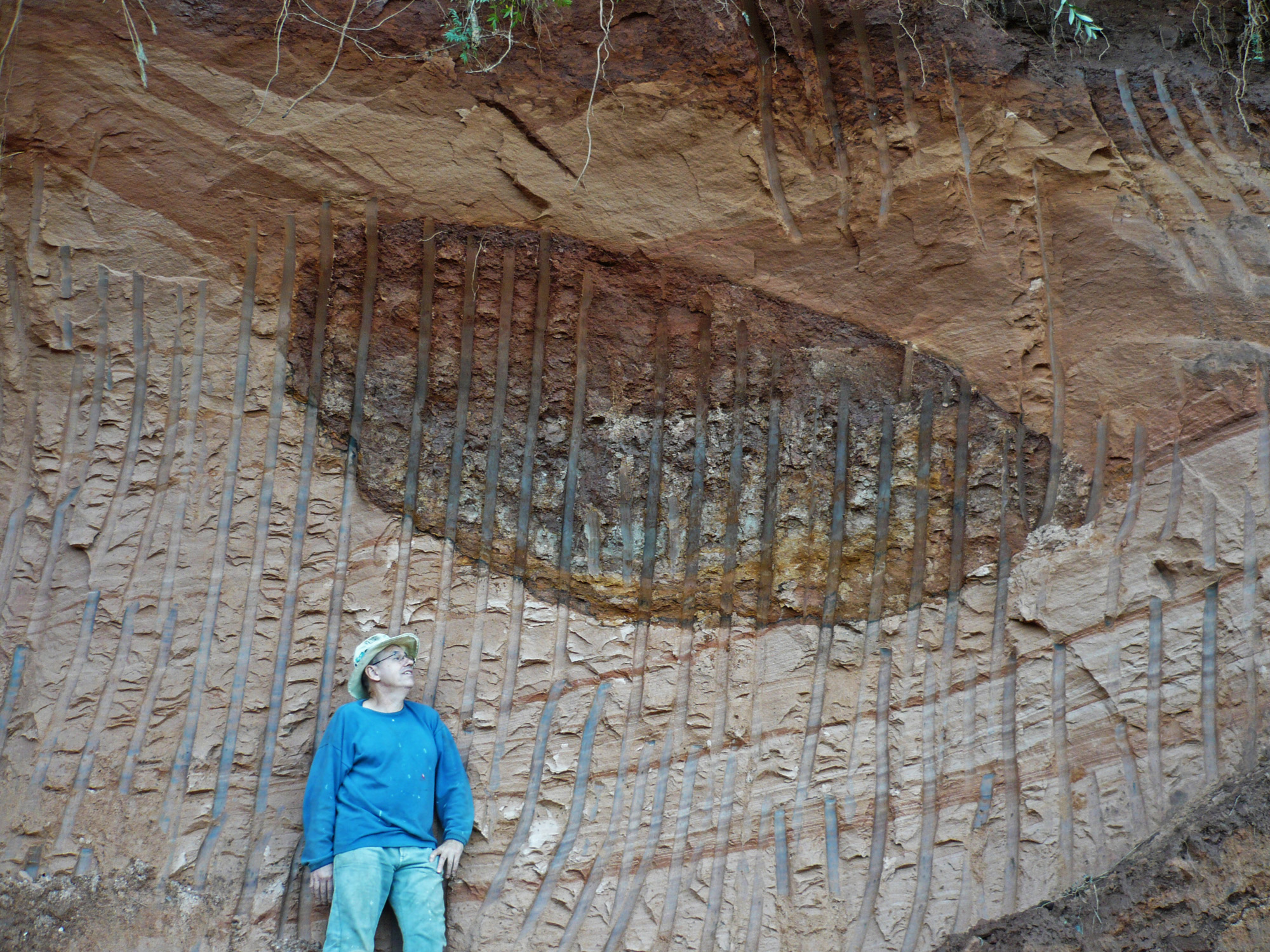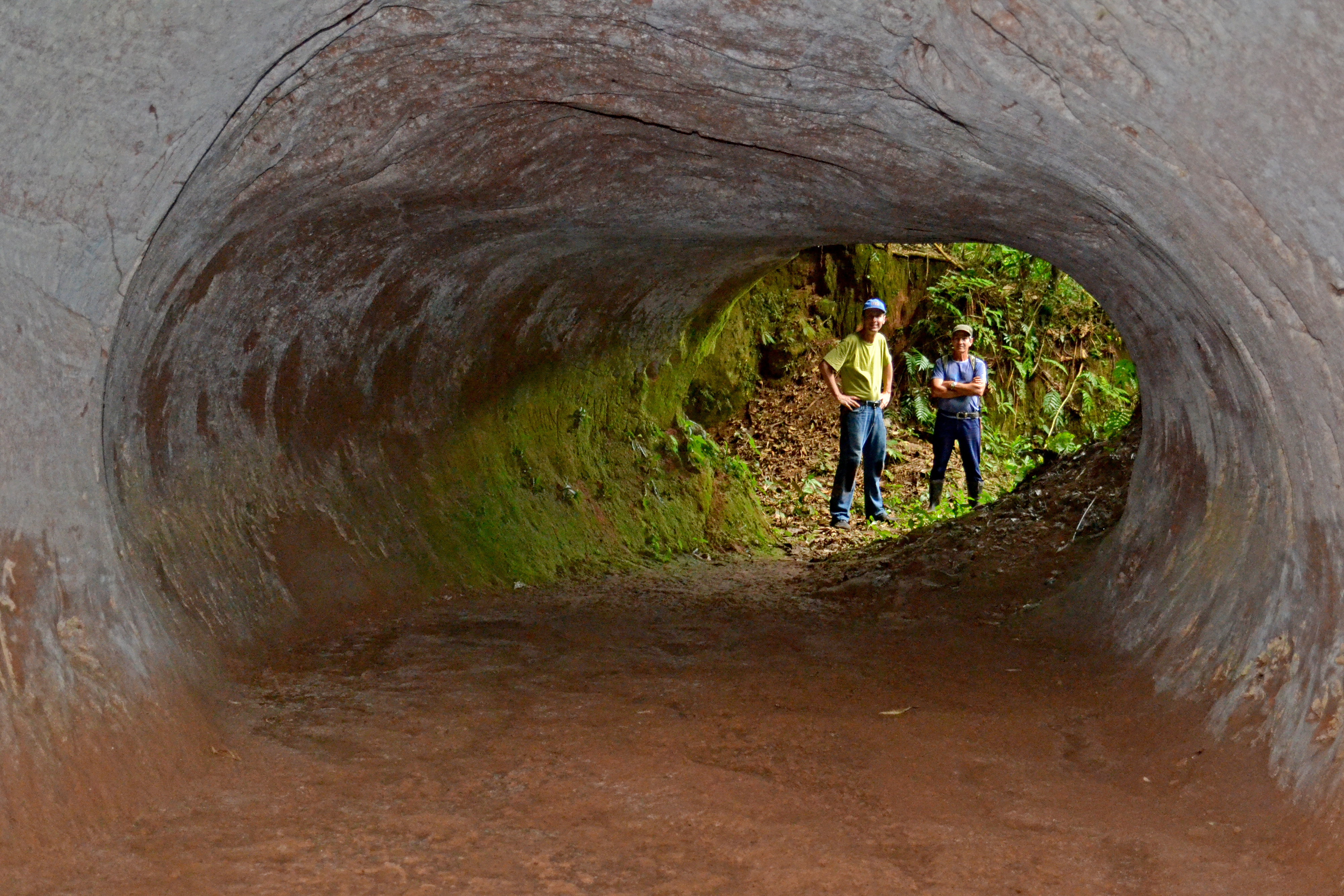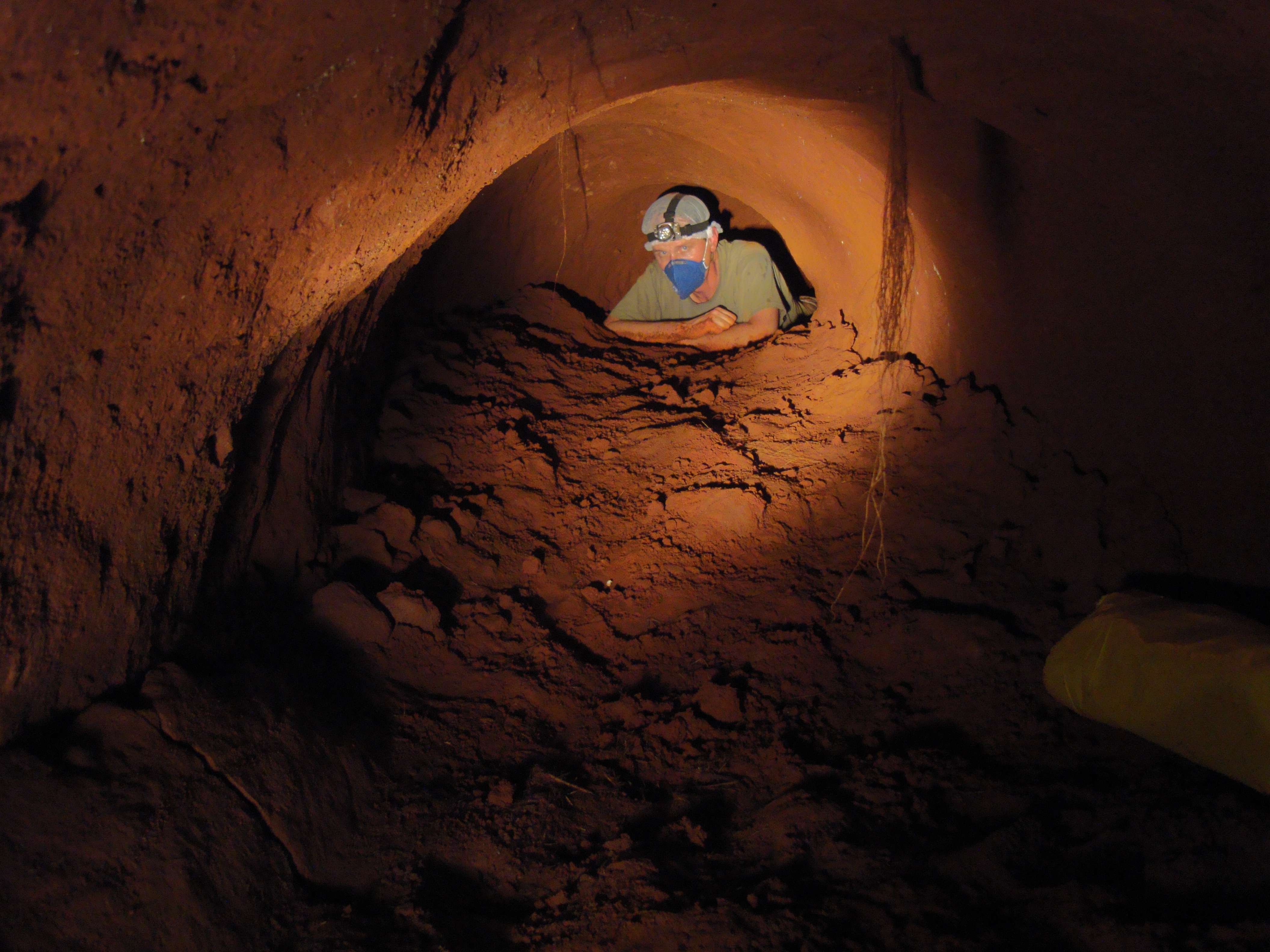Megaichnus Lopes et al., 2016
DESCRIPTION: Cylindrical, subhorizontal burrows with lengths up to 10s of meters. Smaller burrows (Megaichnus minor) are cylindrical, from 0.9 to 1.4 m in diameter. Larger ones (M. major) are elliptical, with the major axis oriented horizontally; up to 2 m tall, and 4 m wide.
Burrows usually isolated, but also found clustered in small areas. Many are simple; others are branched; sometimes individual burrows intersect each other. Larger ones exhibit smooth walls. Subparallel, straight to slightly curved scratch marks are common in most burrows. Fur and carapace impressions are recorded inside burrows dug in clayey sediments. Many burrows of the smaller ichnospecies are total or partially filled with sediments.
BEHAVIOR(S): Semipermanent dwelling, possibly for breeding, belonging to the Domichnia ethological class.
ENVIRONMENTAL SETTINGS: Found in continental areas, usually close to water sources in terrains with moderate to steep slope. Produced on hard rocks (sandstones, weathered metamorphic and igneous) and semi-consolidated clayey to arkosic sediments stable enough to prevent collapse.
POSSIBLE TRACEMAKERS: Large extinct xenarthran mammals: giant armadillos and ground sloths.
GEOLOGIC RANGE: Pliocene (Chapadmalalan Age) to the late Pleistocene ('Ionian'?).
ADDITIONAL REFERENCES: Lopes, R.P.; Frank, H.T.; Buchmann, F.S.C.; Caron, F. 2016. Megaichnus igen. nov.: Giant Paleoburrows Attributed to Extinct Cenozoic Mammals from South America. ICHNOS (online), p. 1–13. http://dx.doi.org/10.1080/10420940.2016.1223654
REMARKS: Larger burrows (Megaichnus major) have been found in Brazil, but smaller ones (M. minor) have also been found in Argentina and Paraguay. Fossils inside the burrows have only been found in Argentina. Some burrows show signs of posterior reoccupation by other organisms, whereas others exhibit smooth subelliptical surfaces on the floor and lower part of the wall, interpreted as resting sites. Local people in many places are aware of these burrows, and several legends were created to explain their existence.
